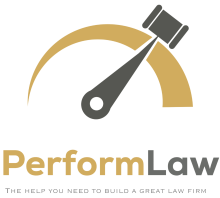Structuring compensation for a law firm's equity owners is a nuanced and critical task that directly impacts firm culture, talent retention, and overall performance. A well-designed equity owner compensation system not only reflects a firm’s financial goals but also aligns with its values and operational strategy.
Equity owner compensation systems can vary greatly—from straightforward profit-sharing based on ownership to complex models incorporating weighted metrics and various evaluation criteria.
This post outlines three essential elements that every law firm should consider when designing an equity owner compensation system:
1. Key Metrics: Originated Fees and Working Attorney Fees
- Originated Fees: A principal driver in many firms, originated fees represent the revenue generated by bringing in clients, underscoring an equity owner's ability to attract and maintain client relationships.
- Working Attorney Fees: This focuses on the actual work performed by an attorney, whether for their clients or those of others in the firm, to promote accountability and reward hands-on client engagement.
While originated and working attorney fees remain at the forefront, other valuable metrics—such as hours invested in training junior associates or supervised fees—can add depth to an equity owner's contribution profile, even if these factors are not always prioritized.
|
Takeaways:
|
2. Framework: Objective and Subjective Systems
- Objective Systems: These use data-driven metrics for compensation awards, providing a transparent, performance-based approach.
- Subjective Systems: Relying on senior leadership evaluations, subjective systems reward intangible contributions like mentorship, firm loyalty, and cultural support.
Most firms combine these frameworks to balance measurable outcomes with qualitative contributions, which can differ greatly based on firm culture, size, practice type, and other strategic goals.
|
Takeaways:
|
3. Transparency: Open vs. Closed Systems
- Open Systems: These make the entire compensation calculation process visible to all equity owners, fostering trust and minimizing speculation.
- Closed Systems: Only individual compensation is shared with each equity owner, often to maintain confidentiality but sometimes resulting in less clarity.
An effective system aligns transparency with the firm's culture, whether through full disclosure or a more private approach, ensuring equity owners feel fairly recognized.
|
Takeaways:
|




 />i
/>i

